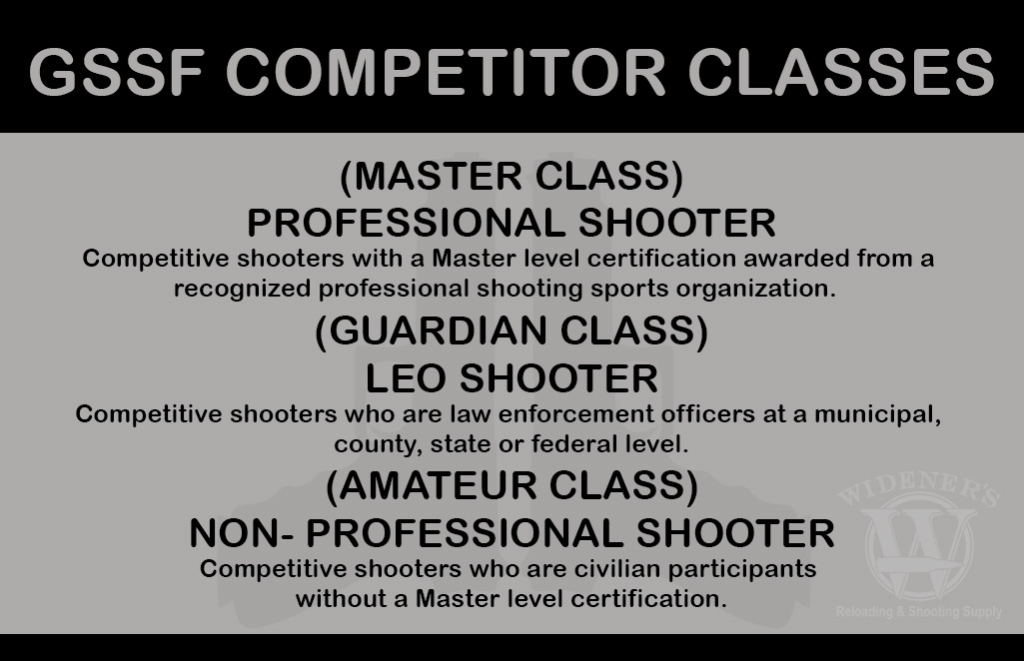
Guest Writer: Kenzie Fitzpatrick
The Glock Sport Shooting Foundation (GSSF) started in 1991 and annually holds over 50 competitions every year across the United States. These competitions are designed so that brand new shooters have a low barrier to entry and don’t need a lot of practice or experience to shoot.
Steps To Prepare For A GSSF Match:
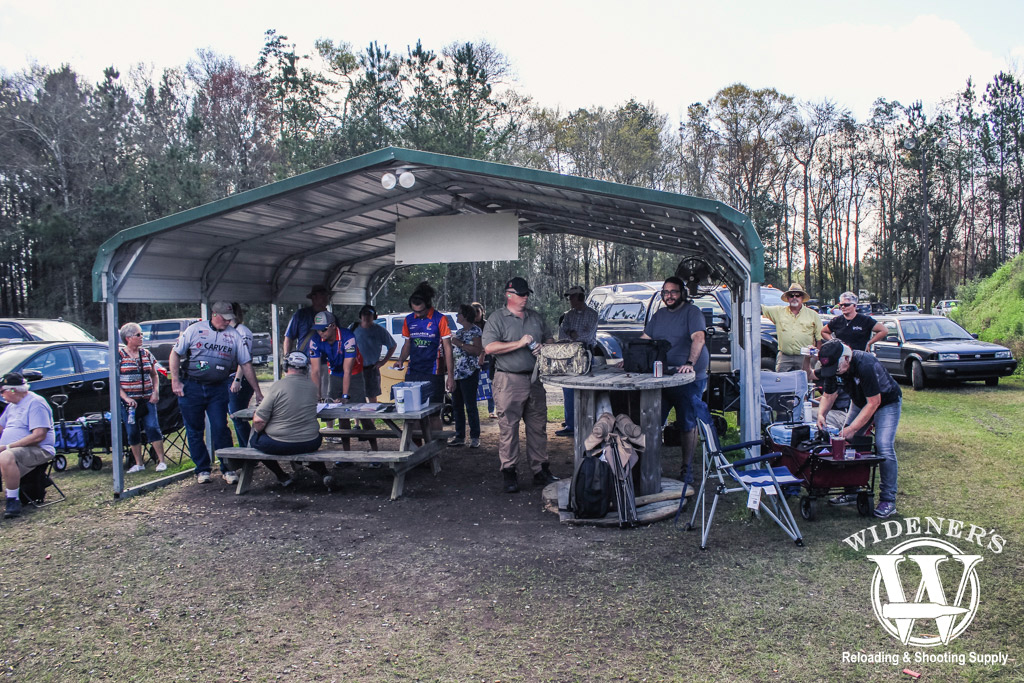
The GSSF is a fun, family-oriented shooting competition featuring the responsible use of Glock firearms.
•Sign Up Or Renew Your GSSF Membership
Your GSSF membership must be current in order to register for a match. An annual new membership costs $35 and renewal runs $25. If you work in a job that could be considered a “hazardous public service” position, the price is $25 for a new membership or renewal.
If you are just wanting to sign up or renew a membership and nothing else, fill out this form. To register for a match and complete your membership or renewal at the same time, fill out this form.
•Pre-Registration
Pre-registration is the easiest process and saves you a lot of time when you get to the range. Instead of waiting in a long line the day-of, all you have to do is check-in and pick up your shooting stickers.
Pre-registration cuts off at noon on the Wednesday prior to the match date.
GSSF Match Registration Types
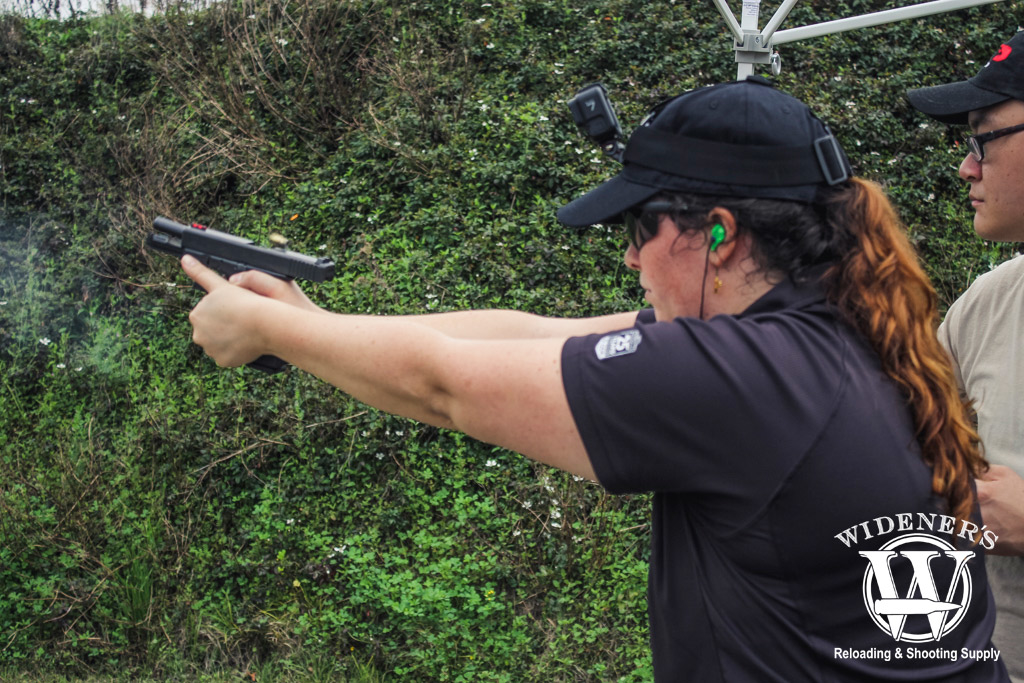
The Glock Girls Side-Match is one of the most popular female shooting sports in the U.S.
•There Are Three Types Of GSSF Registration:
- Main Match Competitor – Open to all Amateur & Master competitors, includes a variety of GSSF divisions.
- Glock Girls Side-Match – Open to all Amateur or Master female GSSF competitors.
- Pocket Glocks Division – Designed for shooters of the GLOCK G42 and G43 models, (also includes G28 models).
GSSF Main Match Registration Includes The Following Divisions:
- Amateur Civilian – Open to all Amateur competitors, one entry per match, all stock Glock pistol models (or factory compensated “C” models).
- Open Amateur Guardian – Open to all Amateur competitors, one entry per match, all stock Glock pistol models (or factory compensated “C” models).
- Amateur & Master Subcompact – All shooters may compete with stock Glock subcompact models G26, 27, 29, 30, 33, 39 and 43X.
- Amateur & Master Major Subcompact – All shooters may compete with a stock Glock subcompact model G36, Glock models G29, 30, 39 may also be used, loaded with 7 rounds only, if the competitor does not own a G36.
- The Amateur & Master Heavy Metal – All shooters may compete with stock Glock models G20, 21, 29, 30, 37, 38, and 39 GLOCK firearms (or factory compensated “C” models).
- Amateur & Master Unlimited – All shooters may compete with Glock models that feature modifications or aftermarket parts. Shooters may also participate with stock Glock models with the exception of the G36, G42, and G43 models.
- Amateur & Master Master-Stock – All shooters may compete with stock Glock models.
Full rules & regulations of each GSSF division can be found in the current GSSF rules.
The registration form helps you determine which division(s) you are eligible to shoot in based on your pistol model. It also tells you the limits for how many divisions you can compete in based on your amateur or master status. The best resource to determine your eligibility for divisions is to visit the GSSF Made Simple document. This clarifies what pistols are included in each division, who the division is open to, and what modifications are allowed.
GSSF Class Designations
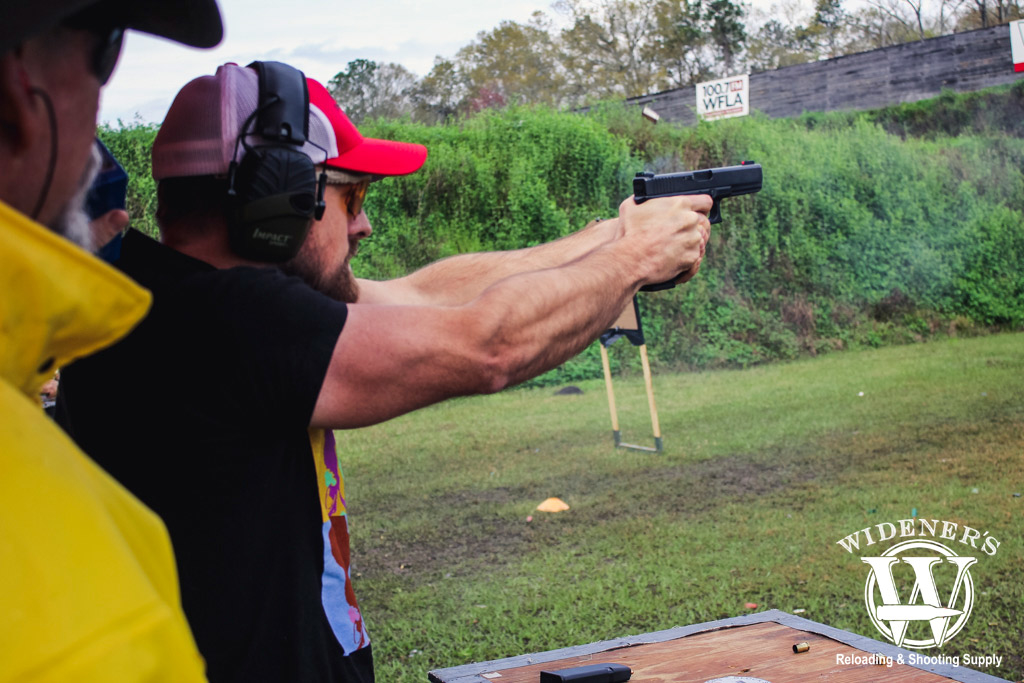
The GSSF Master Class is for professional shooters who want to compete against their peers.
Not sure what GSSF class to compete under? Or maybe you’re ready to move up to the next class tier, but are unsure if you qualify? Take a look below at the GSSF qualifications for competition classes.
The GSSF Amateur Class
GSSF Amateur Class shooters are competitors who are not professional shooters, or shooters who are not classified as Master Class in non-GSSF shooting competitions or have participated in previous GSSF matches in any division without winning high-overall at the events.
The GSSF Guardian Class
GSSF Guardian Class shooters are full-time law enforcement officers of a municipal, county, state or of the federal government. Guardian Class shooters may also be firearms instructors at law enforcement agencies or police academies with an official ID. Guardian Class shooters may compete as Amateur Class shooters, but they may only compete as the class they register for at each GSSF event.
The GSSF Master Class
GSSF Master Class shooters are competitors who have one (or more) of the following designations. Certification of Master status in USPSA, PPC, ICORE, NRA, Cowboy Action or Armed Forces and LEO shooting teams. Master Class shooters may also be competitors who have won at least 3 Glock high-overall matches in any division at previous GSSF events.
Checking Your Gear Before A GSSF Match
•Firearm, Magazines, Pistol Case, Holster & Ammo Check
Before a match, make sure your guns are clean and oiled up. If you keep a magazine fully loaded that you’ll be shooting with at the competition, double check that it still feeds properly and that the spring is still in good condition. Two of the three GSSF stages require you to shoot three strings of the stage and one of the stages requires you to shoot four. If you can afford four magazines, this saves time from having to reload in the middle of shooting a stage.
One of the best practices that I have learned for these competitions is to have a pistol bag for each firearm you are shooting or a holster if you’re just using one. After you have completed a stage, the range officer will ask you to holster or bag your firearm so if you’re shooting multiple divisions, you put away one firearm before bringing out the next one.
In total, shooting one division recommends you bring 100 rounds of ammunition. If you don’t miss a single shot, you only need 81 rounds of ammunition so having the full 100 is a good idea. However, if you have a malfunction for any reason, you get one reshoot so that may require more ammo depending on how far into shooting a stage you get.
How To Shoot A GSSF Match:
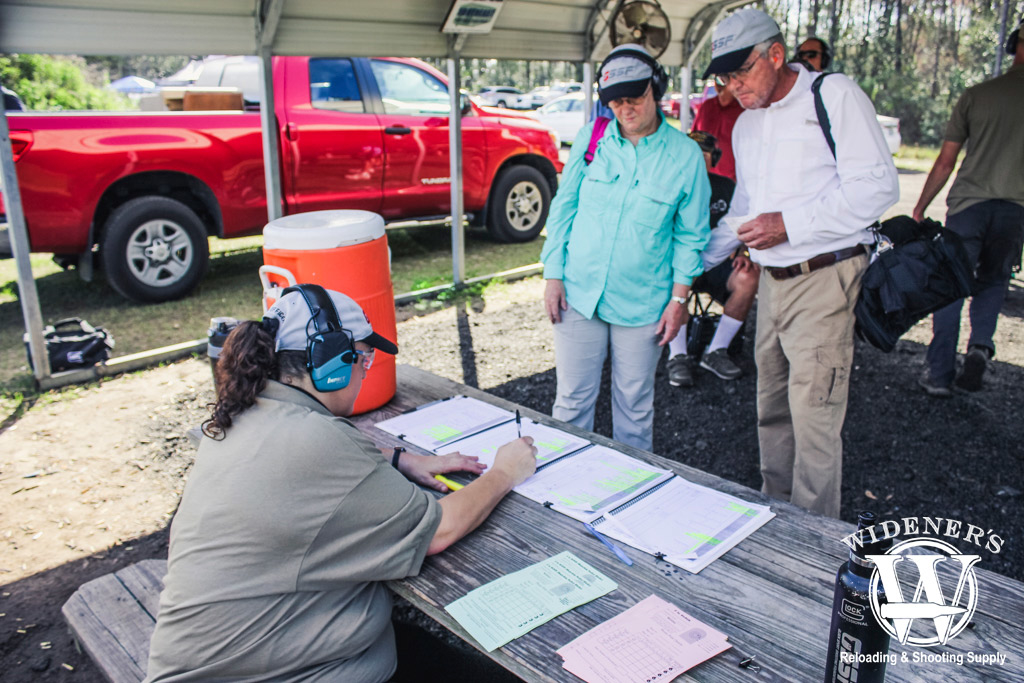
Be sure to plan ahead and arrive early to increase your chances of success at your next GSSF match.
Arrive early on the day of the match and SIGN IN! This is the most important tip I can give you, I know because I have learned the hard way. You don’t want to stand in a long line watching all the spots fill up, or miss your chance to participate because you were late.
GSSF rewards shooters who come first thing in the morning. After you check in, immediately go to EACH stage (See below: Glock’M, Five To Glock, Glock The Plates) of the match and sign in to the shooter’s book located at each stage. You sign a line for every division you are shooting.
When you are ready to shoot a stage, put an “X” next to your name in the shooting book for the division(s) you are ready to shoot. This tells the RO working that you are ready to be brought to the line on that stage. If you only want to shoot one division at that time, only “X” in next to one of your entries.
The higher your name is on the list gives you priority to shoot before other shooters EVEN if they have been waiting at that stage longer. What this means is that you skip all the shooters who signed in after you who showed up to the range later than you did. If you’re the first person who signed in at each stage, you could be in and out of the whole competition very quickly.
Pre-Load Your Magazines
Before it’s your turn to shoot, pre-load your magazines for the stage. Glock’M and Five to Glock only require three magazines while Glock the Plates requires four. You can load 11 rounds per string for all the divisions except for Major Sub (Pocket Glocks) where you can load 7 since the max capacity of their magazines is 6. The three courses of fire can be explained more in-depth on the GSSF website.
Shooting The GSSF Stages
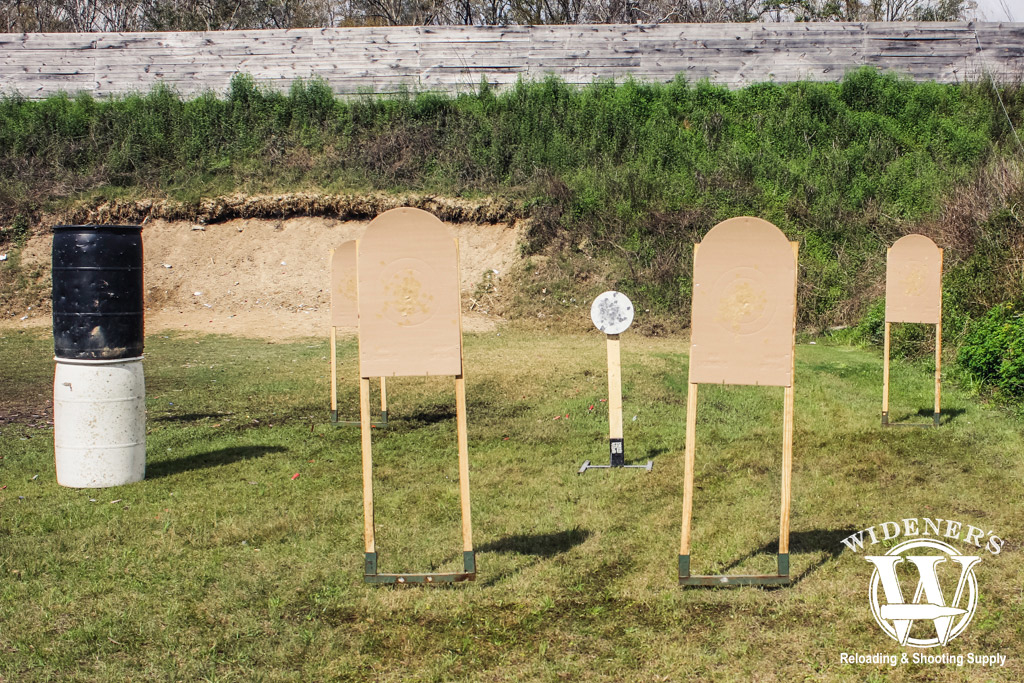
Make sure you pay careful attention to the Range Officer’s instructions when shooting a GSSF match.
The start position for all of the stages (or courses of fire) will be at the “low ready” position. There will be an orange cone in front of the targets where you point your firearm before starting. When you walk up to the firing line, the range officer (RO) will tell you to unbag/unholster your firearm and magazines.
Next, the RO will give you the opportunity to take an unloaded sight picture meaning you can look at the targets with your pistol as if you were to shoot each of them. The RO will then tell you to load and make ready where you load your magazine, rack your slide to chamber a round, and get into your shooting position. The RO will then ask “shooter are you ready”? You can give a verbal agreement, nod your head, or just stay at the ready position. The next thing you’ll hear is “standby” and a loud beep from the timer which is your signal to engage the targets.
GSSF Stages
-
- Glock’M – There are four paper targets and one steel. The targets range from 7 yards to 15 yards. Other than in the major sub division, two shots are made on paper and one on steel. Major sub is just one. The 10th shot can be used if the steel is missed or to make up a shot on paper if you think you missed.
- Five to Glock – There are five paper targets ranging from 5 yards to 25 yards. Other than in the major sub division, two shots are made on each target.
- Glock The Plates – Six eight inch round steel plates at 11 yards have to be hit in any order until they fall.
After you have completed your last string, the RO will ask you to unload and show clear. Drop your magazine, unload the round in the chamber, lock your slide to the rear, and show that your firearm is clear. They’ll then tell you to holster your firearm or to let the slide forward, “hammer down” meaning pull the trigger in a safe direction. From that point, you can decide whether to put your firearm up in the bag or case. Remember, If you are only holstering your firearm, the slide has to always be locked to the rear.
Scoring A GSSF Match
Scoring can also be found on the courses of fire page. The scoring is based on time and accuracy. A hit in a zone other than A or B adds to your raw time. Complete misses, leaving plates up, and not hitting the steel targets all add time. Scoring can sometimes be up online as quick as that same weekend, but typically are posted by the Tuesday following the match. You are allowed to report any errors to GSSF with the final results posted 2-3 weeks after the match. Once the final results are posted, prizes are mailed out.
Don’t forget when you leave the match to load your concealed carry firearm back if you shot with it.
Shooting An Indoor GSSF Match: What’s The Difference?
•How to Shoot an Indoor GSSF Match
- A GSSF membership card is NOT necessary to compete – they abide by an honor code regarding membership which is a little different than the outdoor matches.
- An indoor league GSSF match is a 3-match series. If you want to qualify for awards and prizes, you must shoot in at least 2 of the 3 matches. The benefit to shooting all three times is that only your top two scores are averaged for your overall score.
- There are many different course of fire options that a range could choose to follow. Shots could range from 9 feet to 75 feet. Typically, you are to fire 10 rounds at each distance, but some clubs shoot 5 rounds at some distances.
- Shots are scored with the following metric:
- 10 points = X Ring
- 10 points = 10” Ring
- 8 points = 8” Ring
- 5 points = any other bullet mark on the target
- If a shot cuts the line, the higher point value is given.
- There is a maximum of 500 points.
The Perks Of GSSF Membership
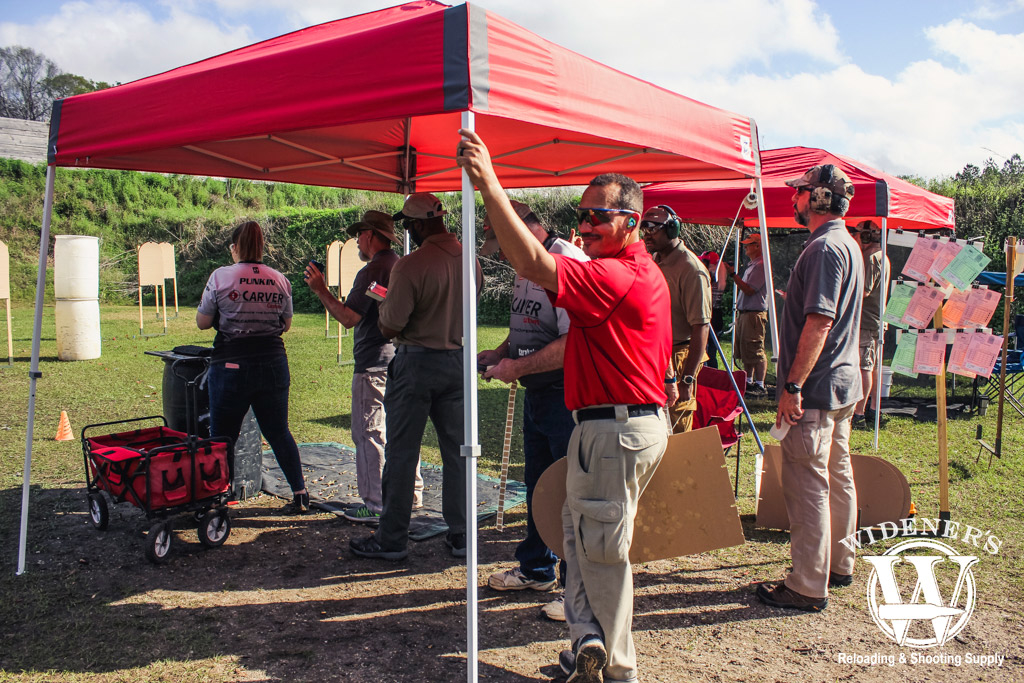
Becoming a GSSF member is an exciting journey, the best part is all the friends you make along the way.
- You don’t have to be certified to be a range officer at a match. If you volunteer to work a match, Glock gives out shirts, hats, prizes to choose from. Or they offer free shooting entries, RO only contests for a chance to win a free Glock, and more. The range will typically feed their RO’s for working. It’s a lot of fun to hangout at a range all day and meet fellow shooters/ROs.
- A Glock armorer will be at the competition for anything that goes wrong with your pistol. They replace parts right then and there for free. My Glock 34 had an issue with one of the pins creeping out while I was shooting. So I stopped shooting and took it to the armorer. He replaced the part in it, and I was able to reshoot the stage.
- The biggest perk of shooting a GSSF match is the amount of random free items they give away to shooters. They randomly choose shooters for free memberships, cash money, and free Glock pistols of their choosing. If you bring a new shooter, they and whoever brought them get entered into a drawing for a free Glock for coming and bringing new shooters.
For more information about the matches, view the GSSF League Guide. For match forms and membership, visit the GSSF website.


